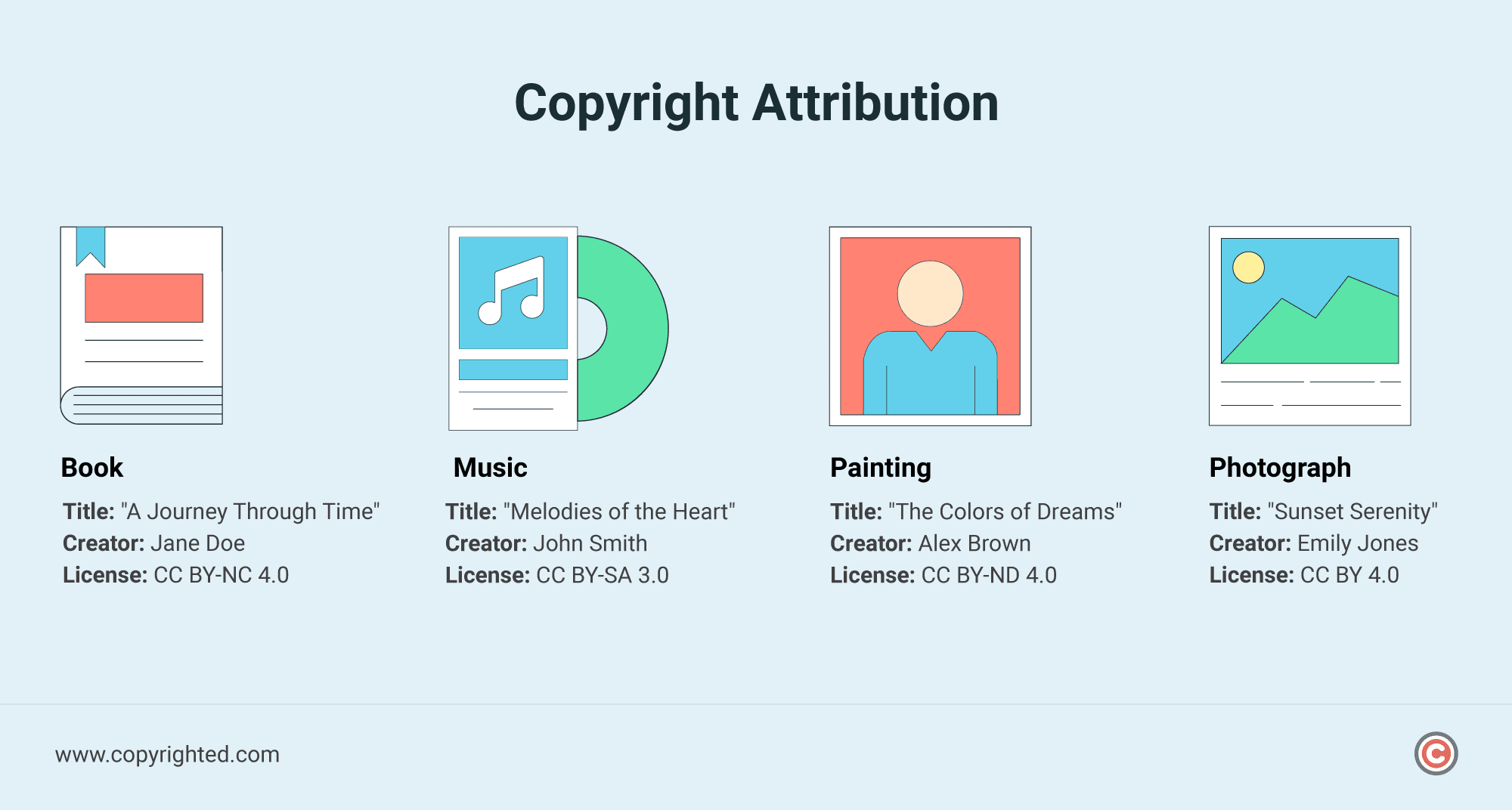Ever stumbled upon amazing content that you can’t wait to share on your platform?
In the era of seamless digital sharing, it’s easy to assume that sharing content without proper attribution won’t raise eyebrows. However, in the aspects of legal and responsible content creation, overlooking proper attribution isn’t just a missed detail, it can impact the thriving dynamics of the creative community.
This is not the ideal way to encourage creators to continue sharing their work. Because in a time when sharing is increasingly effortless, proper attribution becomes the heartbeat of a thriving creative community.
In this article, we’ll unpack copyright attribution and explore its significance in the digital creative landscape. From understanding the legal aspects to potential infringement claims, we’ll also guide you through practical steps on how to do copyright attribution correctly.
- Copyright attribution is the practice of giving proper credit to the original creator or owner of a copyrighted work
- When you attribute, you need to make it personal, specific, and appreciative.
- When content is under a Creative Commons license, the creator allows others to use, share, and sometimes modify their work, often free of charge.
Table of Contents
What is Copyright Attribution?

Copyright attribution is the practice of giving proper credit to the original creator or owner of a copyrighted work when it’s used or shared by others. It involves acknowledging the source of the creative material, such as images, text, or music, and providing information about the author or copyright holder.
This attribution typically includes details like the creator’s name, the title of the work, and often a reference to the specific license or permissions under which the work is shared.
Now why does giving credit matter in the digital world?
Think of the internet as a busy marketplace for ideas, and giving Copyright Attribution is like keeping things honest and fair. When you attribute copyright, you’re basically putting a digital signature on content – whether it’s a picture, text, or music.
It’s a way of saying, “Hey, someone worked hard on this!”.
Now, let’s talk rules. Ensuring proper attribution also has important legal implications.
Failure to provide adequate attribution may lead to legal consequences, including potential infringement claims. So, providing credit also functions as a safeguard against potential legal consequences.
In essence, copyright attribution is like a digital handshake, making sure there’s respect and cooperation between creators and content consumers.
When creators get the recognition they deserve, it boosts their confidence and sets a standard for everyone else. It creates a positive cycle where creators are inspired to make amazing things, and the audience gets to enjoy a mix of creative expressions.
What are the Components of Copyright Attribution?
When you attribute, you need to make it personal, be specific about the creator and the work, and show appreciation by stating how you’re using it. Now, let’s explore the key components of copyright attribution:
- Creator’s Name: The cornerstone of attribution lies in acknowledging the individual or team behind the creation. Similar to an artist’s signature on a painting, mentioning the creator’s name ensures proper recognition of their contribution.
- Title of the Work: Just as a book has a title and a painting has a name, specifying the title of the work adds precision to the attribution. It’s a way of introducing the content, making it easily identifiable in the vast digital landscape.
- Usage Indication: Transparency in how you’re using the content is also essential, as it establishes a clear understanding of how the content can be shared or modified. Whether under a specific license or with direct permission, indicating the usage terms is like clarifying borrowing conditions.
What Does Attribution Mean in Creative Commons?
In Creative Commons, attribution means giving proper credit to the original creator when using or sharing their work.
When content is under a Creative Commons license, it means the creator allows others to use, share, and sometimes modify their work, often free of charge. However, the bedrock of this generosity is proper attribution.
Providing attribution in Creative Commons involves clearly stating who the creator is and ensuring their name is associated with the work. This acknowledgment not only complies with the license terms but also respects the creative efforts and rights of the original content producer.
It’s a way of maintaining a balance between sharing and giving credit, creating a culture of appreciation and openness within the creative community.
Examples of Attribution
To truly appreciate the significance of attribution, especially within the context of Creative Commons, let’s walk through some practical examples of how to attribute different types of copyrighted material.
- Attributing Images: When attributing images, it’s important to follow a structured format. For instance, you can credit a photo with the format: “Photo by [Photographer’s Name] on [Platform].” An illustrative example would be: “Photo by Emily Jones on Flickr.”
- Attributing Text: When attributing text, a recommended format is “[Title]” by [Author’s Name], used under [License]. For practical application, consider this example: “The Art of Words” by David Miller, used under CC BY-NC 4.0.
- Attributing Music: For music attribution, maintain a consistent structure such as “[Song Title]” by [Artist’s Name], used under [License]. A concrete illustration could be: “Euphoria” by Sarah Johnson, used under CC BY-SA 3.0.
Frequently Asked Questions
Can you modify the format of attribution given by the creator?
No, it’s essential to adhere to the format specified by the creator for attribution. Modifying the format without permission may violate copyright terms.
What’s the difference between crediting and attributing in copyright terms?
In copyright terms, “crediting” is a broader term that may imply acknowledgment without specific details. “Attributing” is more precise, involving naming the creator, the work’s title, and often license or permission details.
Can you use copyrighted material without attribution if it’s for personal use?
Using copyrighted material for personal use doesn’t exempt you from attribution. Even for personal use, it’s recommended and often legally required to give proper credit to the creator.
Do I need to attribute if I’m using only a small portion of the copyrighted work?
Yes, the size of the portion used doesn’t exempt you from attribution. Even when using a small part, proper attribution is essential to respect the creator’s rights.
How do you write an attribution statement?
An attribution statement typically includes the creator’s name, the title of the work, and license or permission details.


